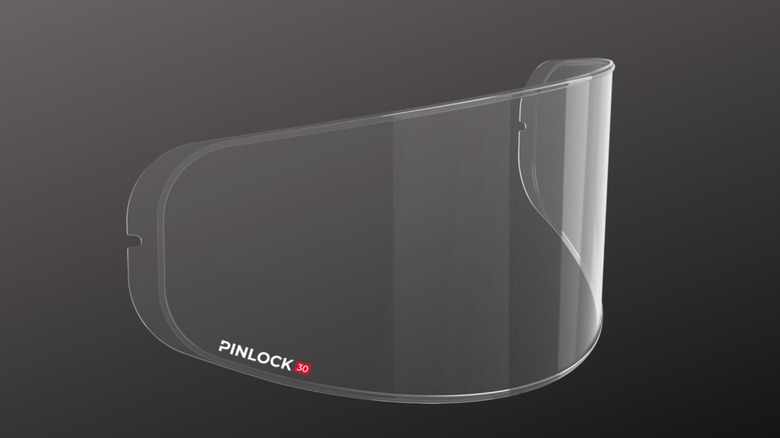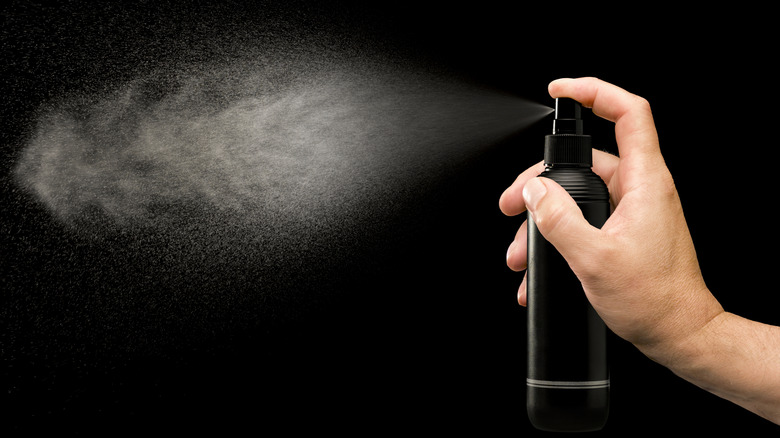How To Keep Your Motorcycle Helmet From Fogging Up
Visibility is crucial when you're riding your motorcycle. Nobody likes having a fogged-up helmet visor, impairing vision and compromising safety on the road. Although many helmets already come with anti-fogging measures like air vents and anti-fog coatings, these aren't always enough. We'll cover several methods to prevent fogging, but before we start, it's useful to know what actually causes your helmet visor to fog up in the first place.
In a nutshell, it's down to the fact that you breathe. When your warm breath meets the cooler surface of the visor, it leads to condensation. This problem is especially prevalent in cold weather when the outside of your helmet is obviously chillier, but it can also happen in humid weather. As you're probably not planning to stop breathing any time soon, and you're even less likely to stop riding your motorcycle, let's look at the practical steps to keeping your visor clear and condensation-free.
Use a visor insert
Pinlock is a Dutch company that manufactures anti-fogging visor inserts. The Pinlock system is made of moisture-absorbing material and securely attaches to your existing helmet's face shield with pins. It uses a silicon bead to create an air-tight chamber, which works a bit like a double-glazed window. The thermal barrier between the visor and anti-fog lens traps the air and insulates the motorcycle helmet from outside temperatures.
You'll need to check whether your type of helmet is compatible with the Pinlock system. There are over 140 compatible motorcycle helmet brands, including Arai, Shoei, Bell, and Forcite.
Although Pinlock is well regarded — Motorcycle News ranked them the number one visor insert –- there are some other visor brands out there, such as Fog City and WeePro. Unlike Pinlock, these inserts attach directly to the visor using adhesive, which makes them a viable option for helmets that aren't Pinlock-compatible.
Apply anti-fog treatments
You can also apply anti-fog treatments to your visor. These are available as sprays, gels, and wipes. Popular brands include Cat Crap paste, Muc-Off Anti-Fog Treatment spray, and Ultimateaddons Visor Wipes.
Generally, anti-fogging products work by using surfactants to minimize surface tension on your visor, preventing the formation of visible water droplets and forming a transparent layer of moisture that doesn't obstruct your vision. Most anti-fog products create a hydrophilic (i.e. water-attracting) surface on the material you apply them to. The upshot of this is that if you use them on an already foggy surface, the condensation disappears. They can also be applied beforehand to prevent it from happening in the first place. However, unlike the Pinlock system, which doesn't need any maintenance, you'll need to re-apply these products regularly. The handy thing about sprays and similar products is that they're small, and you can keep them with you to apply when needed.
There are also makeshift solutions. Some riders swear by rubbing a helmet with a raw potato or using shaving cream. Spitting on your visor -– a technique used by scuba divers -– will prevent fogging, as the enzymes in your saliva act as surfactants like those found in anti-fogging products. The downside is that your spit will only work for a short while compared to commercial products, so this is only really worth doing as a last resort.
Lastly, don't forget about ventilation. Most helmets are equipped with adjustable vents. Keep these open to increase airflow and reduce the likelihood of fogging.


